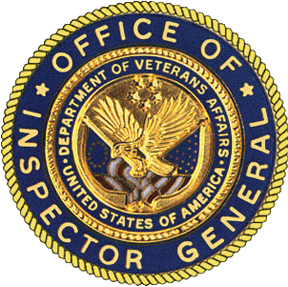Deficiencies in Quality of Care and the Root Cause Analysis Process at the Overton Brooks VA Medical Center in Shreveport, Louisiana
Report Information
Summary
The VA Office of Inspector General (OIG) conducted a healthcare inspection to assess the quality of care provided to a patient while hospitalized at the Overton Brooks VA Medical Center (facility). The OIG also identified concerns with a quality review completed after facility leaders became aware of staff’s mismanagement of a patient’s distressed behaviors.
The OIG found deficiencies with the clinical management of the patient while hospitalized. Deficiencies included a physician who lacked a complete understanding of the patient’s diagnosis and clinical response to a medication prior to discontinuing the medication. Further, facility staff mismanaged the patient’s distressed behaviors. Specifically, staff did not: (1) implement one-to-one observation according to facility policy, (2) activate a behavioral patient record flag (an established safety tool for distressed behaviors), or (3) use the electronic health record as a communication tool between disciplines, according to Veterans Health Administration (VHA) policy.
The Facility Director chartered a root cause analysis (RCA); however, the RCA team’s application of the RCA process did not align with VHA requirements. The RCA team’s failure to follow VHA-required guidelines for the composition and the execution of RCA steps and the RCA’s timeliness affected the reliability of the RCA team’s assessment and conclusion. This finding was similar to one published in an April 2025 VA OIG report on this facility.
The Facility Director concurred with the five recommendations the OIG made related to a comprehensive review of the patient’s hospitalization, obtainment of outside medical records, adherence to one-to-one observation policy, interim behavioral patient record flag processes, and accurate documentation of behavioral events.
The Overton Brooks VA Medical Center Director conducts a comprehensive review of the patient’s hospitalization and takes action as indicated, including quality management improvement processes such as a peer review.
The Overton Brooks VA Medical Center Director ensures medical staff recognize the importance of obtaining hospitalized patients’ non-VA medical records and assesses the current processes for obtaining non-VA medical records, identifies any barriers to completion, and takes action as warranted.
The Overton Brooks VA Medical Center Director assesses the application of the one-to-one observation policy and practices at the facility, and takes action as warranted.
The Overton Brooks VA Medical Center Director reviews interim behavioral patient record flag processes to ensure implementation of safety strategies for staff and patients, and takes action as warranted.
The Overton Brooks VA Medical Center Director evaluates whether documentation of patient and patient-related behavioral events are reflected accurately in the electronic health record to facilitate continuity of care and communication among medical staff and takes action as necessary.
